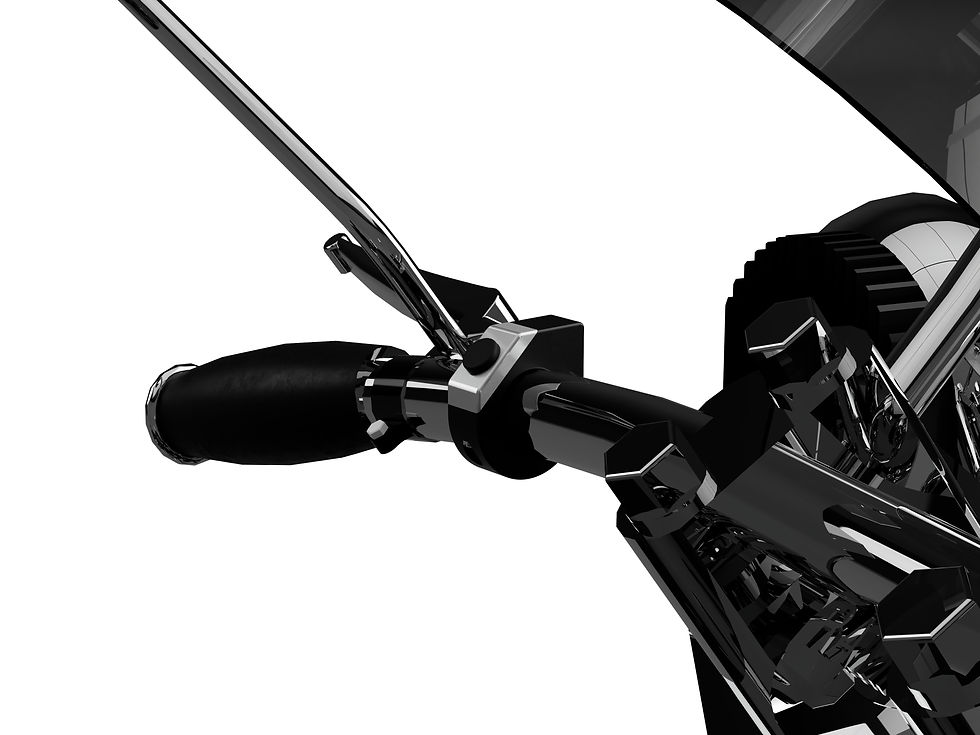Materials and Manufacture - Honours Blog 41
- Jamie Burton
- May 3, 2020
- 4 min read
Updated: May 4, 2020
Two things that need to be considered when designing products are the materials and manufacturing. Often one decides the other, with different methods of manufacture being more appropriate to certain materials. So what are the kits materials, and how will it be manufactured?
Since the kit is made up of 3 separate components, I've had to look at manufacturing each one separately, but for the sake of continuity I've based all three products off similar materials, with each one only differing slightly.
The Bike Kit

The Bike Kit is the part that that sits on the front of the bike, using a wide-angle camera to scan the road for any blind spots continually. Its position right at the very front of the motorcycle provides it with very little protection, so it'll need to be developed out of a material that is strong, weatherproof and can withstand stone chips, dust and water that might get kicked up from vehicles in front.
For this job, I've chosen A.B.S. plastic. Thanks to butadiene, this plastic has an incredibly high tensile strength, making it extremely robust to knocks and bangs. This makes sure that, as well as not breaking the outer casing, that the technology inside is well protected from the elements. A.B.S. also has a relatively low melting point, which makes it an ideal material for injection moulding. This manufacturing method lends its self well to the Bike Kit's complicated shape. It has a relatively low production cost, it's sturdy and lends its self to a whole range of textures and finishes. It also has a very low electrical conductivity, so if something were too short inside of the bike kit, it would offer the rider extra protection.
The bike kit will be manufactured using injection moulding. This manufacturing method will allow a great deal of accuracy and quality, as it lends it's self to producing complicated shapes. It also provides enhanced strength to materials, so coupled with A.B.S. plastics high tensile strength it will ensure the Bike Kit can withstand any knocks or bumps it might have. Its also a relatively low-cost method of manufacture, but due to moulds needing to be made there can be a relatively high initial cost.
The H.U.D.

Unlike the Bike kit, the H.U.D. is made out of a few different materials. Similarly to the rest of the kit, the main body is manufactured out of A.B.S. High tensile strength, low cost, range of finishes and easy to manufacture all lend themselves to this type of product, hence why A.B.S. is being used across the board. However, on the front of the H.U.D., there is a rubber strip, added to make it easier for users to grip the unit. This rubber part will also be manufactured through injection moulding as it comes with benefits such as reduced waste and relatively low-cost manufacture. The glass top of the H.U.D. could be manufactured using what's called a forming machine. This machine holds a mould, then compressed air pushes glass out to form the shape. This would be ideal for the glass display of the H.U.D. as its quite a complicated shape to manufacture. The helmet clip will also be manufactured through injection moulding with A.B.S. The user will need to be assured the helmet clip is strong enough to clip the helmet while holding the H.U.D. and that it won't snap, possibly resulting in a broken product. With its high tensile strength and added rigidity through manufacture, A.B.S. is the ideal material for this part. The Sleep/Wake Button

Like the H.U.D., the Sleep/Wake button consists of a few different materials. In the interest of continuity, the main body of the button will be manufactured using A.B.S. through injection moulding. This manufacturing method lends itself to complicated shapes, meaning the screw threads will be able to be manufactured straight onto the body, and not added later. It also means that if it encounters any knocks or bumps, that it crack or break. The button itself will be made out of rubber and injection moulding. I've decided to use rubber for the button as it will provide that extra bit of grip for when it's pressed. Surrounding the button, however, is brushed aluminium. I decided to use aluminium here as its the one part of the product the user will interacting with the most. The user could be pressing the sleep/wake button several times every journey, and I wanted to ensure that the housing around it wouldn't break or wear. Even though A.B.S. wouldn't wear down from excessive use, it's also the only part of the Blind Spot detection kit what interacted with regularly, so I wanted to provide I high quality feel to the product. This Aluminium piece will be manufactured using an aluminium alloy. This makes sure that the metal is weatherproof and won't corrode, and that its strong enough to withstand any knocks that it might encounter. There we go; if it were to go into manufacture, that's how I see the Blind Spot Detection kit being manufactured. That's all for this blog, Thanks!



Comments